Sprenger: Find the Right Bit in Four Easy Steps
The bit operates like a communication channel between rider and horse. As the mouth is one of the most sensitive parts of the horse's body it is important to treat it very carefully. A bit should be sized and fitted to the individual anatomic shape of the mouth as well as to its characteristic needs. The basic requirement for the correct bit choice is a healthy and properly trained horse.
Step 1: Choose the correct bit size
There are two things to consider for choosing the correct bit size:
- Thickness
- Size
Thickness
The thickness of a bit should be adapted to the anatomic needs of your horse. Research by SPRENGER and the Veterinary University of Hanover found that the oral cavity of horses is fairly small and the available space for a bit can be very limited.
Find the right thickness for your horse’s bit by asking your horse dentist for advice and/or try the "2-finger-test".
Put your index and middle finger together and insert them in the horse’s mouth at the point where the bit usually lies. Pressure on both fingers (small gap between the upper and lower jawbone) requires a thinner mouthpiece (14 – 16 mm).
Little or no pressure on fingers (larger gap) allows a thicker mouthpiece (16 - 18 mm). Using a too thick bit can exert pressure on the sensitive palate and can also cause bruises and injuries. The horse might react with head tossing, gaping its mouth or jerking on the reins.
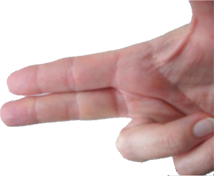
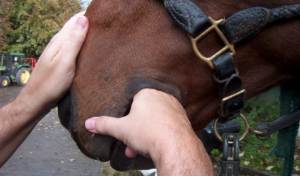
How to measure a bit
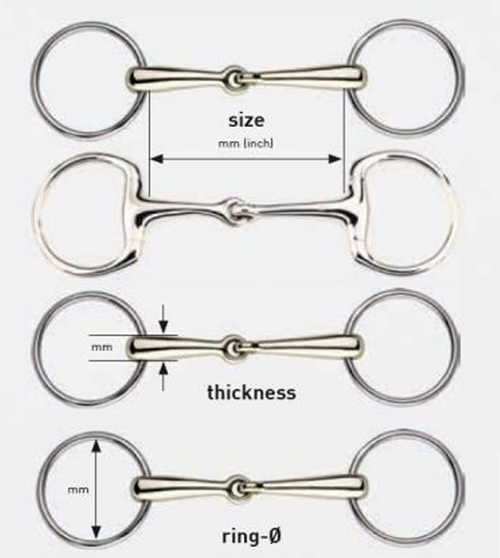
Length of cheeks for Weymouths and Pelhams
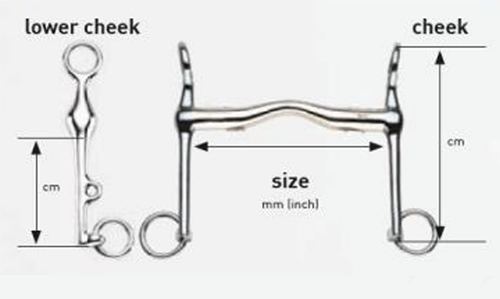
Size
Loose ring snaffles
loose ring snaffles should not leave more than 5 mm space between the corners of the mouth and the bit ring on each side. It should not be too tight, since it must not pinch the corners of the mouth. The ring should always be able to move freely.
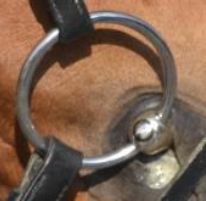
Bits with fixed cheeks
Bits with fixed cheeks such as Eggbutt, D-Ring, Full Cheek, Pelham or Weymouth bits should fit closely to both mouth corners and must therefore be chosen smaller than loose ring snaffles. Due to the contact of the sidepart to the corner of the mouth the rider achieves additional support from rein aids.
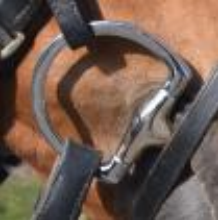
Double bridle
The double bridle consists of a Weymouth and a Bradoon. The bradoon should equal the standard snaffle in size and shape because it lies at the same position in the horse’s mouth. The Weymouth is positioned a little bit lower where the horses head gets thinner. We recommend choosing the Weymouth 0.5 to 1 cm smaller than the bradoon in order to achieve the best possible effect and to make the horse feel comfortable.
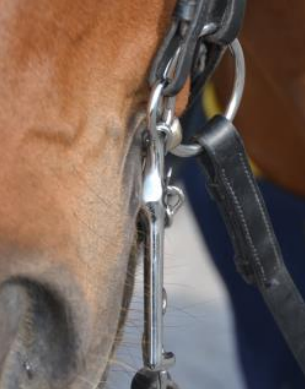
Step 2: Find the right mouthpiece
You should carefully choose between the characteristics and effects of different types of mouthpieces in order to meet the individual needs of your horse.
Single jointed bits
Single Jointed bits forward the riders rein aids to the tongue-edges and the lower jaw bones. When giving rein aids the bit forms a V-shape and exerts pressure to the tongue edges. This can be described as “nutcracker” action. The V-shape may cause problems for horses with a flat palate and small oral cavity or if you choose a too large bit size. In these cases the eye of the joint might press into the sensitive palate and cause bruises or injuries.
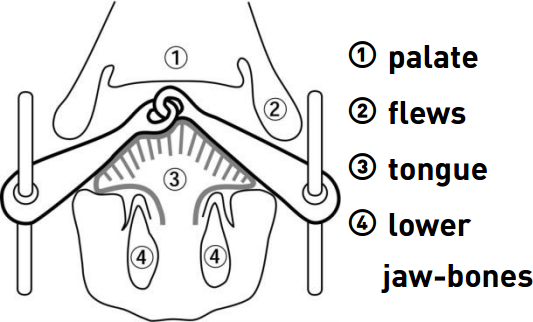
Standard single jointed bits have a production related characteristic: one part of the mouthpiece is longer than the other which results in stronger influence on one tongue edge. To prevent exerting uneven pressure in the long term you should turn the bit around periodically.

To avoid the problem of exerting uneven pressure with a regular single jointed bit, we recommend using the TURNADO or single jointed Dynamic RS bits. The joint of these bits has been angled forward by 45 degrees in order to guarantee an even distribution of pressure on both tongue sides.
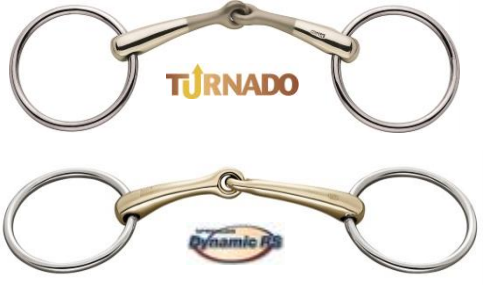
We recommend single jointed novocontact bits for horses that do not take the contact confidently. They also provide added benefit for horses with a sensitive mouth, since the rider is able to give soft aids.

More than 25 years experience have shown that KK bits are really helpful for horses that are very strong at times in the contact to the bit and are unresponsive to the signals of double jointed bits.

Double jointed bits
Double jointed bits distribute the pressure from rein aids more evenly and over a wider surface onto the tongue, without exerting pressure to the sensitive palate. All double jointed bits from SPRENGER made of SENSOGAN and AURIGAN are anatomically adapted to the horse’s mouth. The middle link has been shortened and angled forward in order to make it more comfortable for the horse and to achieve the best possible effect.
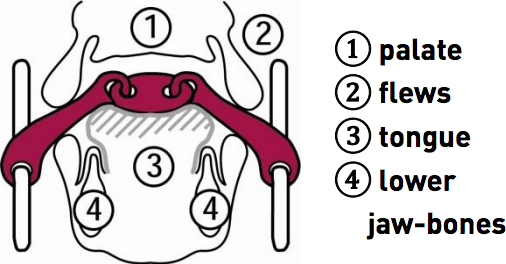
Common double jointed bits have a wider middle link. The eyes of the link are not angled and lie upright between tongue and palate and can therefore cause problems because they might press into the tongue or the sensitive palate, especially when the bit is chosen too thick for the shape of the mouth.

The patented KK ULTRA bits have been developed based on scientific research. They reach their unique and precise effect due to the shortening and 45° angulation of the middle link. This specific adaption to the horse’s oral anatomy makes a noticeable effect in comparison to using common double jointed bits. The bit is gentler to the horse’s mouth and allows the rider to give precise but soft aids.

The ergonomically formed Dynamic RS mouthpiece lies perfectly between tongue and palate, resulting in soft and even pressure on the entire tongue area, encouraging the horse to chew. The gentle joint in the middle which is angled forward by 45° makes it a very friendly bit as it lies smoothly on the tongue and does not press into the sensitive palate.

This unique WH ULTRA roller provides a gentle stimulation to the tongue, which encourages the horse to chew, prompting salivation, allowing the acceptance of the bit therefore the relaxation of the jaw. Through this gentle stimulation the horse learns more quickly to accept the bit softening its entire top-line and perform the movements with more relaxation, thoroughness and ultimately more harmony.

The double jointed novocontact bits are ideal to use on horses that occasionally tend to pull against the hand, but are too sensitive to be ridden with stronger bits.

Mullen mouth bits
It is important to choose the correct size as a bit that is too large can tilt and become uncomfortable when taking up the reins single-sided. Mullen Mouth bits are recommended for skilled and experienced riders only, being able to ride their horse with weight and leg aids.
Straight and rigid
Straight and rigid Mullen Mouth bits exert steady and even pressure on the complete tongue. In comparison to jointed bits, a straight bar exerts less pressure on the tongue edges. The stronger the rein aid the more pressure is directed onto the tongue and lower jaw bone. Recommended for horses that evade the rein aids and tend to get strong. In contrast to bridles with additional lever action on the poll (e.g. Pelham or Kimblewick), Mullen Mouth bits can be used for horses that dodge downwards and lean on the bit.

Straight and flexible (e.g. Flex Control or Duo bit)
Compared to rigid Mullen Mouth bits the effect of single-sided rein aids is slightly better with flexible bits. Pressure is also distributed over the complete tongue when pulling the reins, but gets stronger towards the tongue edges. Recommended for horses that sometimes get strong or show unresponsiveness during the schooling of certain lessons or when approaching an obstacle. Flexible Mullen Mouth bits are often well accepted by horses that do not get along with jointed bits.
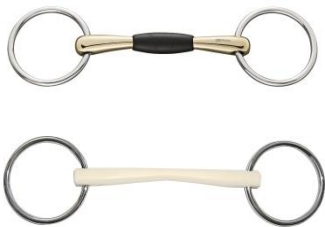
With port
Compared to straight Mullen Mouth bits no steady pressure is exerted onto the tongue with bits that have a port (e.g. CM Mullen Mouth).The middle of the tongue is more relieved with this bit shape and will only be squeezed with stronger rein aids. Suitable for horses that resist the rider’s hand or have particularly fleshy tongues, as well as to correct tongue vices of horses that perceive pressure on the tongue as uncomfortable and evade this pressure by pulling up or sticking out the tongue sidewards.

Step 3: Combine it with the right side parts
Loose Ring Snaffles
loose ring snaffles transmit the pressure of the rein aids directly onto the tongue and the lower jaw without leverage action on the neck. The moveable rings may help to slightly compensate and balance an unsteady and unexperienced rider’s hand. Also, the horse may slightly lift the bit in its mouth by stretching the tongue in order to evade too strong pressure from rein aids in the short term. Loose ring snaffles are suitable for all horses of all disciplines and educational levels, including breaking in a horse and familiarise young horses to bit and bridle.
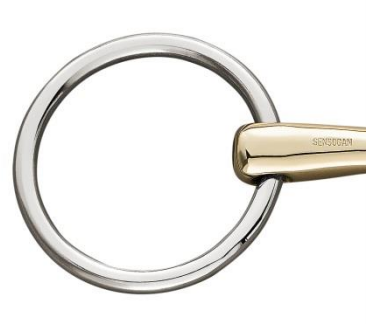
Eggbutt, D-Ring and Full Cheek snaffles
Eggbutt, D-Ring and Full Cheek snaffles transmit the pressure from the rein aids directly onto the tongue and the lower jaw without leverage action on the neck. Due to the fixed cheeks the rein aids reach the tongue in a more direct way. The fixed cheeks keep the bit steady and calm in the horse’s mouth. The smooth transitions to the sideparts make these bits suitable for horses with sensitive mouth corners. Due to the wider contact surface on the corners of the mouth, these bits support guarding and sideways acting rein aids. The larger the contact surface the higher the lateral influence, which means that the above described effect is even higher with D-Ring and Full Cheek bits. Recommended for horses with sensitive mouth corners, horses that tend to play with the bit and therefore give the rider an unsteady contact and for horses that tend to fall out while riding turns or approaching an obstacle.
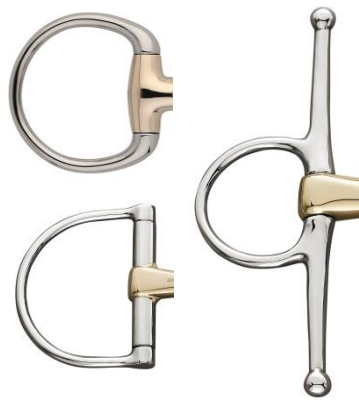
Bits with additional lever action on the poll
When pulling the reins on a Baucher, Multi Ring or 3-Ring bit, pressure is distributed from the tongue onto the lower jaw and the poll. This allows the rider to get more control over strong horses that evade upwards as the horse normally reacts by lowering the head trying to dodge this pressure. The Baucher bit is suitable for preparing dressage horses for being ridden with a Weymouth. (These types of bit cannot be recommended for horses that tend to evade downwards or push down against the rider’s hand.)
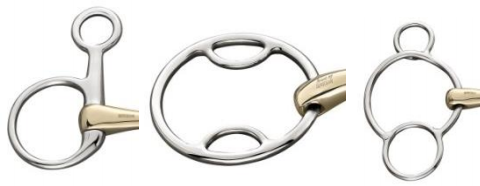
Bits with additional lever action on the poll and lower jaw (e.g. Pelham, Weymouth or Kimblewick)
These bits act on three different parts of the horse’s head: over the tongue onto the bars, by lever action of the lower cheeks on the poll and through the curb chain on the chin groove. The rein aid is therefore distributed to several pressure points on the horse’s head. This enables the rider to give clearer instructions and to get more control over strong and powerful horses. A correct basic education and rideability is necessary for using these bits. As the chin is very sensitive and only covered with a thin layer of skin we recommend using a curb chain guard.
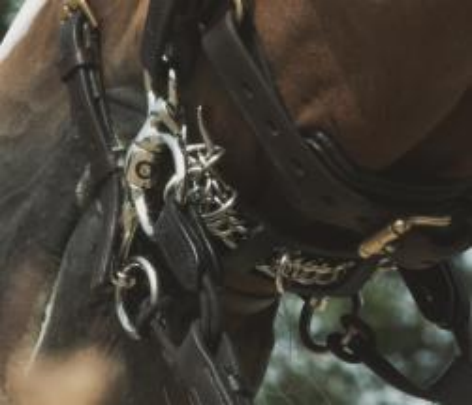
Step 4: Bit material
Metal
The greatest advantage of metal alloys is a high breaking strength and a long lasting durability. However there are significant functional differences between the existing metal bit materials being used in a horse’s mouth.
Copper alloys for example are very popular as bit materials. Copper qualifies as a bit material because of its natural oxidation process which can be used to increase the chewing activity of a horse. Because copper itself is fairly soft it needs to be hardened by other metals. This is where it gets interesting, because the metal that is used to harden copper has a big influence on the function of the bit.
Stainless steel
Stainless steel is an alloy of iron, chrome and nickel and has a high breaking strength. It is neutral in taste, has no saliva activating properties and therefore does not increase the chewing activity of a horse. Because of the low production costs, the majority of stainless steel bits is made in Far East and – depending on the manufacturer - may provide significant differences in quality. All SPRENGER stainless steel products fulfil highest quality standards.
Aluminum bronze / common copper alloys (all golden coloured copper alloys except AURIGAN and SENSOGAN)
Alloy of copper and aluminum with high breaking strength. Aluminum is a useful alloying addition to harden the copper but it largely eliminates the natural oxidation process of copper – the reason why copper qualifies as the preferred bit material. Therefore common copper alloys do not increase the salivation and chewing activity of the horse.
AURIGAN / SENSOGAN (Made in Germany)
AURIGAN and SENSOGAN are patented bit materials developed by SPRENGER, based on scientific research, toxicologically tested by the Veterinary University of Hanover and practically tested by professionals.
AURIGAN: Alloy of copper, zinc and silicon. Silicon hardens the copper without influencing the natural oxidation process of copper.

SENSOGAN: Alloy of copper, manganese and zinc. Manganese hardens the copper without influencing the natural oxidation process of copper.

Both materials increase the salivation and chewing activity which positively influences the horse’s comfort, concentration and willingness to perform. SENSOGAN achieves even better salivation results as AURIGAN with less content of copper - this makes it also easier to maintain and keep the shining appearance.
Synthetic/plastic or rubber bits
Compared to metal bits, plastic and rubber bits are softer and should not get in contact with the teeth of your horse. SPRENGER Duo bits are food-safe, solvent free and do not contain plasticisers. All SPRENGER Duo and rubber bits have a steel cable to provide more security and prevent from being bitten through.
Rubber generally has an “eraser-effect”. We recommend the use of rubber bits only for horses that are salivating and chewing well in order to prevent it from being uncomfortable for the horse.
Based on scientific research - Made in Germany
KK ULTRA bits (double jointed) reach their unique and precise effect due to the shortened middle link that is rotated by 45° to the front. This specific adaption to the horse’s oral anatomy makes a noticeable effect in comparison to using common double jointed bits.

Dynamic RS bits – a further development of the KK-Ultra bits - are ergonomically shaped in order to appropriately fit between tongue and palate. This results in a better acceptance of the bit even by sensitive horses and allows giving soft but effective aids.

WH ULTRA bits combine the KK ULTRA mouthpiece with a unique roller in the center section. The roller improves the chewing activity, concentration and attention of the horse.

TURNADO bits are incomparable to common single jointed bits. Due to the 45° angulation of the middle joint TURNADO bits enable even distribution of pressure on both sides of the tongue, whereas common single jointed bits always distribute more pressure on one tongue edge.

novocontact bits have a unique oval shape which widens the contact area of the mouthpiece on the horse’s tongue. The wide contact surface allows soft rein aids without putting pressure on the palate.

For all SPRENGER bits that are stamped with an arrow on the side of the mouthpiece applies: Make sure that the arrow is pointing forwards on the left hand side.
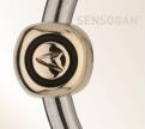
See our range of Sprenger bits, or read more Sprenger articles: Why Choose Sprenger? and Who Uses Sprenger?
